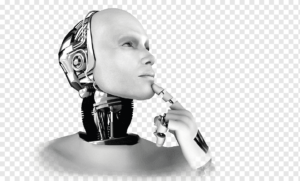
Look around our environment. Everything we see and use results from combined efforts from different disciplines. Then why do our students need to learn these disciplines as separate subjects in school? Would it be more beneficial to learn all these disciplines integrated into a single curriculum? This is where STEM education plays an important role. Are we educating our younger ones to get a job or scores? Our education should be focused on “Educate to Innovate”. In 2009, the Obama administration announced the “Educate to Innovate” campaign to motivate and inspire students to excel in STEM subjects.
So, what is STEM?
STEM, an acronym coined by Biologist Judith Ramaley in 2001, stands for Science, Technology, Engineering, and Math. It refers to a set of interlinked subjects that are crucial foundation concepts for children and adults of today. Although STEM stands for Science, Technology Engineering, and Mathematics, it’s much more than that. Unlike traditional education experiences in which subject areas are concentrated on separately, STEM education emphasizes technology and integrates subjects in ways that connect disciplines and relate them to each other.
Learning it the STEM Way!

STEM is a new way of learning that integrates the four disciplines to force the student to use cross-disciplinary knowledge to solve problems. Students will rarely be given a straightforward solution to a problem. Instead, students will be required to use what you already know to figure out the correct answer for yourself. This requires a significant amount of creativity, flexible thinking and technical knowledge, and mastery of each discipline.
The current way of learning is often highly analytical, but not very creative. Successful students who are learning in STEM learn how to think for themselves and not worry about their expectations of being told what to think.
Just like non-STEM students, students in STEM are coached in their learning to build up mastery of the four disciplines. But when it’s time to apply what they’ve learned, whether a student does well depends on how well they can solve the problem, not how much they’ve memorized.
Creativity and ingenuity, when paired with STEM, lead to new ideas and innovations. Without these traits, the recent advancements in artificial intelligence or machine learning would not have been possible.
Students learn in a safe environment during STEM education activities to fail and try again. STEM education impresses upon the students the value of failure as part of the learning exercise, making them embrace mistakes as they learn. This results in confidence and resilience for students, which will enable them to proceed further even when the going gets tough.
Most of the technological advancements wouldn’t have come about without scientists taking some risks and experimenting with their ideas. Many innovations were done by people who were told that their ideas wouldn’t work. But they had the attitude of still trying it, that eventually led to their success. A similar attitude needs to be encouraged by students in K-12 through relevant STEM courses.
Students of varying ability levels can work together to find solutions to problems, record data, write reports, give presentations. The result is students who understand how to collaborate with others and thrive in a team-oriented environment.
Through STEM education, students are taught skills that they can apply in the real world. This encourages students to learn with interest, as they know that their skills will be utilized immediately in the real world and in ways that positively impact them and their loved ones. Applying their knowledge to new and novel tasks will bode well for them when they enter the workforce.
STEM learning teaches kids the power of technology and innovation. When students learn about new technologies at a young age, they will be better prepared to embrace them instead of being hesitant about it. This will give such students an advantage in the global economy, as the world is becoming increasingly tech centered.
STEM education also trains students on how to solve problems using their critical thinking skills. By engaging in STEM learning experiences, students learn to examine problems and then create a plan to solve them. To succeed in life, students have to apply what they have learned to a variety of scenarios. STEM education teaches them to adapt the concepts they learn to various iterations of a problem or issue.
STEM learning at DigitCodemy
This is where DigitCodemy experiential learning platform offers a STEM curriculum for K-12 students. DigitCodemy focuses on imparting multi-disciplinary and competence-based education, emphasizing digital literacy, coding, and computational thinking to develop children’s critical thinking and problem-solving capabilities.
What differentiates STEM from traditional science and math education is the blended learning environment and how scientific methods can be applied in our daily life. DigitCodemy’ s experiential learning platform does a great job in this context. It is a blend of technology and experiences of the child. A fun and innovative method of learning. Students are taught about computational thinking and focus is on the real-world applications of problem-solving.
DigitCodemy brings modern teaching, learning experiences to individual students and in collaboration with schools to their students. To know more about us, please visit https://www.digitcodemy.com




